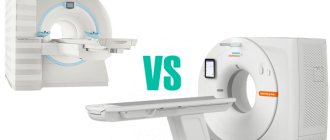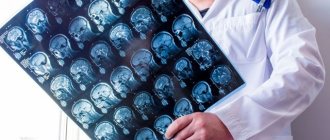Clonic seizures are a type of convulsive seizure that is characterized by rapid alternation of periods of muscle contraction and relaxation. Seizures are often accompanied by uncontrolled motor activity; less often, the clinical picture is dominated by confusion or loss of consciousness. The patient loses contact with the outside world and later cannot remember the details of what happened. Statistics show that about 2% of people have experienced clonic or tonic seizures. In 65% of cases, the episode was single, and 35% of patients had repeated seizures.
Characteristic
A seizure reflects pathological electrical activity in certain areas of the brain structures, which leads to disruption of brain function. Repeated seizures indicate the development of epilepsy, a chronic disease. In epilepsy, the number of episodes not associated with provoking factors (transient stress effects) is more than 2, the interval between individual episodes is more than 24 hours.
A single convulsion does not apply to epileptic seizures, in which repeated episodes are required. The nature of the seizures determines their type. Clonic convulsions are a seizure characterized by continuous, rhythmic (with periods of increased muscle tone and relaxation) muscle contractions, which externally resemble twitching of parts of the torso and head.
The main difference between tonic and clonic seizures is the nature of muscle contractions. The difference between clonic and tonic spasms is that in the second case, instead of a rhythmic twitching, a sustained muscle spasm occurs. The atonic form is characterized by a significant weakening of muscle tone. The myoclonic type of seizures is characterized by rhythmic muscle twitching without simultaneous rigidity - numbness, hardening, as in the clonic form.
Clonic seizures are idiopathic (primary form) and secondary (symptomatic), caused by a primary pathology - a tumor localized in the medulla, malformation and other anomalies in the formation of the vascular bed, foci of cerebral infarction. Symptomatic epilepsy is often diagnosed in newborns and the elderly. In the second case, the pathology is more often associated with tumor processes and impaired cerebral blood flow, occurring in an acute form. Attack criteria:
- Change in level of consciousness (darkness, loss).
- Sensory disorders (impaired perception of visual, auditory, tactile stimuli, impaired skin sensitivity - burning, tingling sensations).
- Motor disorders of focal localization, caused by uncontrolled contraction of the muscles of the face and torso.
- Convulsions (generalized spasms affecting muscles throughout the body).
The diagnosis is made on the basis of clinical manifestations and the results of laboratory tests, instrumental examination (neuroimaging - CT, MRI, electroencephalography). Single attacks are usually triggered by a disease or external irritant of a transient type (CNS infections, metabolic disorders, cardiovascular diseases, taking medications that induce such side effects). Newborns often have seizures when their body temperature rises (febrile seizures).
There are focal (focal) and generalized (distributed throughout the body) types of seizures in adults and children. Classification of seizures involves distinguishing forms with motor and non-motor onset. Clonic-tonic convulsions are a so-called grand mal seizure. Hormetonia is short attacks characterized by tonic muscle spasms. Hormetonic convulsions are a paroxysmal increase in muscle tone, mainly in the limbs, which leads to their uncontrolled movement.
Generalized tonic-clonic seizures occur due to excessive excitation of neurons, pathological electrical activity of brain structures located in both hemispheres. With this form, the patient often loses consciousness, and uncontrolled motor activity is observed in both halves of the body. If seizures occur continuously, we are talking about status epilepticus.
Symptoms
Tonic spasms may affect the upper and lower extremities. But they can also affect the face and neck. In particularly difficult cases, they can cause respiratory spasms. During an attack, the victim's lower and upper limbs extend, and he feels tension in all muscles. If the spasm affects the whole body, then the person throws his head back, clenches his teeth, stretches out and loses consciousness. Such seizures are usually a symptom of epilepsy or some other illness.
Clonic seizures result in rhythmic contraction of muscle tissue. During spasms, the lower limbs bend, and the spinal column, on the contrary, bends. Also, spasms can be observed exclusively in the legs. One of the symptoms of clonic seizures is stuttering, which occurs due to spastic processes in the respiratory organs. It is not difficult to distinguish clonic and tonic convulsions, but depending on their symptoms, one can understand the cause of the pathological condition, which is what the doctor is guided by when making a diagnosis and prescribing adequate therapy.
Causes
Pathologies and conditions can provoke the development of convulsive seizures - a history of traumatic brain injury, neurological diseases, drug use or withdrawal, abuse of alcoholic beverages. Hereditary predisposition plays an important role in pathogenesis. In most cases, with the idiopathic form, patients have relatives suffering from a similar pathology. The causes of clonic and tonic seizures correlate with the age of the patient:
- Children under 2 years old. Fever, congenital anomalies in the formation of brain structures, birth injuries, metabolic disorders.
- Children aged 2-14 years. The idiopathic form of epilepsy is more often detected.
- Adults under 65 years of age. Tumor processes localized in nervous tissue, stroke, traumatic brain injury, withdrawal syndrome associated with withdrawal of alcohol or drugs.
- Adults over 65 years of age. Tumor processes localized in brain tissue, stroke.
In the reflex form of epilepsy, seizures occur as a result of provoking factors - a flash of light, certain sounds, video materials with flashing frames, video games. Insomnia and sleep deficiency lower the threshold of readiness for seizures. Convulsive seizures can develop due to non-compliance with the dosage and frequency of taking anticonvulsants.
Causes
Clonic and tonic seizures, as well as their combined variant, most often occur with neurological disorders. Up to 80% of diseases of the nervous system are accompanied by muscle spasms; somatic, infectious, and endocrine diseases account for no more than 20%. Main reasons:
- organic brain damage, tumors, epilepsy;
- disturbance of calcium metabolism associated with dysfunction of the kidneys, thyroid gland or insufficient absorption of the microelement;
- intoxication due to poisoning, late gestosis (eclampsia);
- arterial hypertension with convulsive crises or renal pathologies;
- some somatic diseases - heart or liver failure, blood diseases, uremia and others;
- infections (tetanus, cholera);
- hysteria;
- magnesium deficiency, water-electrolyte imbalance;
- increased physical activity.
Modern diagnostic methods, including instrumental and laboratory ones, make it possible to accurately determine the cause of the seizure syndrome in order to prescribe appropriate treatment.
Clinical manifestations
Tonic-clonic convulsions are a form of seizure in which an aura may occur during the prodromal period, which in some cases allows one to predict the imminence of the next episode. The main components of the aura are sensitivity disorders, mental, autonomic disorders (feelings of fear, feelings of discomfort in the epigastric region of the ascending type, the appearance of an unpleasant odor, tingling sensation, burning sensation in the skin area).
In most cases, the seizure ends spontaneously after 1-2 minutes. With clonic convulsions, uncontrolled contraction and relaxation of muscles occurs, with a rapid change between the spasm phase and the relaxation phase. Bilateral (two-sided) tonic-clonic seizures often end in a postictal (developing after the attack) state, when the patient falls deeply asleep or has a decreased level of consciousness.
In the postictal period, symptoms may occur - headache, muscle pain, which are observed for several minutes or hours. Sometimes clonic or tonic seizures lead to the development of Todd's palsy (weakness of the transistor-type limb muscles on the side opposite to the location of the focus of epileptic activity in the brain).
Todd's palsy indicates central nervous system depletion. Most patients are asymptomatic between seizure episodes. Deterioration of the neurological status is often caused by the primary disease that provoked the attacks. Tonic spasm is typical for children and usually occurs during sleep. Persistent spasm of the axial (axial) muscles occurs abruptly, spontaneously or gradually.
Then convulsive contractions can spread to the proximal (located closer to the body) parts of the limbs. In this case, tension in the neck muscles is usually observed. The duration of tonic seizures is usually 10-15 seconds. If the duration of the attack increases, after the tonic spasm, a clonic phase often occurs, when the torso and limbs begin to twitch.
Clonic seizures are more often observed in newborns and are manifested by twitching and shaking of the limbs. The pathological process involves the muscles of the face, neck, and torso, which leads to involuntary fluttering of the whole body. The tonic-clonic form is much more common than the clonic form. Tonic-clonic seizures are generalized and focal bilateral.
The onset of a GTCS (clonic-tonic attack of the generalized type) coincides with an involuntary cry, after which the patient loses consciousness and falls due to a tonic muscle spasm. After the tonic phase, the clonic phase develops, when individual parts of the trunk and limbs begin to twitch rhythmically due to rapid uncontrolled contraction and subsequent muscle relaxation.
During a seizure, symptoms such as foaming, drooling from the mouth, involuntary urination, and fecal incontinence are usually observed. With twitching and muscle contractions in the head area, patients often bite their tongue, cheeks, and soft tissues of the oral cavity. The duration of the GTCS is usually 1-2 minutes. This form of convulsive attacks is not characterized by the appearance of a pre-attack aura.
Tonic-clonic seizures with a focal onset and subsequent bilateral spread occur while consciousness is maintained or against the background of loss of consciousness. Focal forms are characterized by motor and psychomotor disorders, sensory disturbances, and pass without loss of consciousness. In the focal bilateral form, the focal seizure transforms into a generalized one.
Why are seizures dangerous in children?
Seizures in children pose a real danger to health and life:
- in infancy, in newborns, convulsive syndrome can result in sudden death;
- with repeated attacks, the development of ischemic stroke and encephalopathy is possible;
- there is a high risk of oxygen starvation;
- possible mental retardation.
Directly during a convulsive attack, the victim falls and may hit a hard, sharp object, and this is fraught with serious traumatic brain injury.
Diagnostics
The diagnosis is made based on the history and clinical picture. When collecting an anamnesis, information such as the duration of the attack, the frequency of episodes, the duration of the periods between attacks, the presence of an aura and provoking factors, and the presence of postictal manifestations are clarified. If an attack occurs for the first time, laboratory and instrumental examinations (neuroimaging, electroencephalography) are performed.
Treatment
The main directions of therapy are eliminating the causes of clonic and tonic seizures, prescribing anticonvulsants (anticonvulsants), surgical intervention (in cases where pharmaceutical correction is ineffective).
Patients are advised to completely abstain from drinking alcohol and driving a car. You should also avoid activities that involve risk (working with power tools, on a conveyor belt) - if a seizure occurs, injuries are possible.
In 10-20% of cases, the pathology is not amenable to pharmaceutical correction, which necessitates surgical treatment. During the operation, the area of brain tissue that provokes epileptic activity is removed. An alternative treatment is electrical stimulation of the vagus nerve using an implanted medical device.
Forecast
Correct therapy leads to a decrease in the number of attacks in 35% of patients, and in 35% of patients attacks stop. With adequate therapy, the severity of symptoms decreases. Susceptibility to pharmaceutical correction causes a high probability of cessation of attacks after discontinuation (completion) of treatment.
In 60% of cases, patients may not take anticonvulsants after completing the course of therapy. It is legitimate to talk about the complete elimination of seizures if they do not recur for 10 years, and for the last 5 years the patient has been without anticonvulsants.
Clonic seizures are characterized by alternating periods of muscle contraction and relaxation, which outwardly looks like twitching of individual areas or the entire body. Correct treatment results in freedom from seizures in a third of patients.







